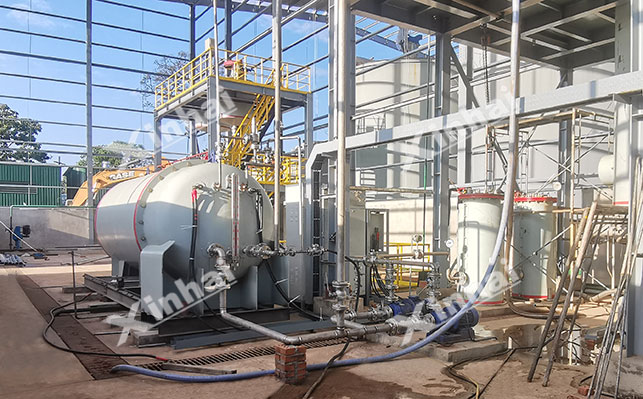If you want to know more information (such as product/process price, etc.), please contact us 24-hour telephone
Building a small-scale gold processing plant is a systematic project that requires a combination of technical, legal, and operational expertise. From mineral rights application to process flow design, each step must be scientifically planned to ensure economic benefits and environmental compliance. Below are the key steps and practical suggestions for constructing a small-scale gold processing plant, covering core industry knowledge to help you efficiently initiate your project.
1.1 Market Research
Price Trend and Demand Gap Analysis: Utilize authoritative sources such as the World Gold Council (WGC) to analyze historical fluctuations in gold prices and future expectations, assessing market trends in conjunction with the global economic situation.
Demand Positioning: For small to medium-sized gold processing plants, focus on regional gold demand, such as jewelry manufacturing, local investors, or industrial gold channels.
1.2 Feasibility Study
Precise Calculation from Ore to Revenue: Conduct ore analysis using XRF spectrometers or laboratory assays to determine gold content (g/t), mineral composition, and associated elements. For instance, if the ore contains sulfides, flotation processes need to be considered.
Cost Accounting: Calculate fixed and variable costs for mining, transportation, and processing stages, estimating the break-even point based on current gold prices. Assuming a gold price of $1,800/ounce, an ore grade of 5g/t, and a recovery rate of 80%, the value per ton would be approximately $230.

2.1 Mineral Rights Application
Step-by-Step Acquisition of Legal Qualifications:
Exploration Rights: Submit regional geological data and exploration plans while passing initial environmental reviews.
Mining Rights: Provide reserve reports and mining plans along with completing an Environmental Impact Assessment (EIA). For example, in the U.S., compliance with the National Environmental Policy Act (NEPA) is required.
2.2 Environmental Compliance
Creating a Green Factory:
Wastewater Treatment: Use neutralization methods for cyanide-containing wastewater combined with activated carbon adsorption to ensure emissions meet EPA standards (<0.2mg/L).
Solid Waste Management: Establish tailings ponds with impermeable layers to prevent heavy metal contamination of soil. For example, Australia requires tailings ponds to comply with GISTM international standards.
3.1 Mineral Processing Technology
Tailored Gold Extraction Solutions:
Gravity Separation: Suitable for coarse gold ores using shaking tables or centrifugal concentrators with recovery rates reaching 60-80%.
Flotation: Applicable for sulfide ores using butyl xanthate as a collector, enhancing recovery rates up to 85%.
Cyanide Leaching: Ideal for fine gold ores with leaching rates exceeding 90%, requiring strict control of cyanide concentration (0.05%).
3.2 Equipment Selection
Combining Compactness and Automation:
Crushing: Select small jaw crushers (e.g., PE250×400) with a processing capacity of 5-20t/h.
Grinding: Equip with φ1.5×3m ball mills paired with classifiers.
Gold Recovery: Use a combination of shaking tables and carbon-in-pulp (CIP) methods to save space and improve efficiency.
4.1 Cost Control
Careful Operational Strategies:
Energy Optimization: Implement variable frequency drives for ball mill motors to save up to 30% energy.
Labor Costs: Train multi-skilled operators to avoid redundancy.
4.2 Safety and Maintenance
Ensuring Continuous Production:
Establish Standard Operating Procedures (SOPs) for regular inspections of cyanide storage facilities.
Maintain equipment by replacing ball mill liners quarterly and checking flotation machine impeller wear monthly.
Economic Analysis of Small-Scale Gold Processing Plant:
Assuming project parameters:
Ore reserves: 50,000 tons
Grade: 5g/t
Recovery rate: 85%
Total cost: $150/ounce (including mining, processing, management)
Revenue Calculation:
50,000t×5g/t×85%=212.5kg=6,830ounces×$1,800=$12,294,00050,000t\times 5g/t\times 85\%=212.5kg=6,830ounces\times \$1,800=\$12,294,00050,000t×5g/t×85%=212.5kg=6,830ounces×$1,800=$12,294,000
Net profit is approximately $3,000,000.
Future Prospects for Small-Scale Gold Processing Plants
Through scientific planning and meticulous operations, small-scale gold processing plants can become efficient profit-generating units. Keeping an eye on technological advancements (such as bioleaching methods) and policy trends (like carbon reduction requirements) will continuously optimize production processes and support long-term development. It is advisable to regularly collaborate with mining consulting firms to maintain technological foresight.